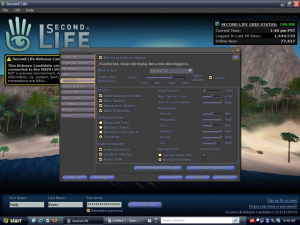Over the past twelve months or so I have been using iobit’s Advanced System Care Pro to maintain the stability of my computers on my home network in conjunction with CCleaner as part of my computer maintenance routine.
Knowing that Advanced System Care Pro is good at what it does I thought I would look at other products from iobit when I came across iobit Security 360.
Security 360 is a malware and spyware removal utility that deeply scans the computer for signs of malware and spyware as iobit put it on their product page for Security 360:
“Security 360 PRO is an advanced malware & spyware removal utility that detects, removes the deepest infections, and protects your PC from various of potential spyware, adware, trojans, keyloggers, bots, worms, and hijackers. With the unique "Dual-Core" engine and the heuristic malware detection, Security 360 PRO detects the most complex and deepest spyware and malware in a very fast and efficient way.”
Key Benefits
Complete PC Security Care
-
Anti-malware, anti-spyware, anti-adware, anti-Trojan, anti-bots, and more. Security 360 can assist* your Antivirus to defend any tricky and complex threats.
* Currently, there is no solution that offers a 100% effectiveness rate for detecting virus and malware. -
Work with All Antivirus Products
Everyone needs a qualified antivirus software, and Security 360 will surely be the best mate for your current Antivirus.
-
1-click Solution and Very Easy to Use
Traditional advantages of IObit products. We love simple and automatic styles.
-
Very Fast and Light
Thanks to the unique "Dual-Core" anti-malware engine, complicated analysis can be made faster now.
-
Automated Working in the Background
Just install it and forget it. This powerful utility works continuously, automatically and quietly in the background on your PC. You can set it as your schedule or just let it work automatically when your PC is idle.
-
Finds the Deepest Infections
Using DOG (Digital Original Gene), a novel heuristic malware detection method, Security 360 can find the most complex threats.
-
Automatic and Frequent Updates
By the new-generation malware analysis system and our professional database team, Security 360 catches the emerging dangerous malware in the Internet.
-
FREE, Award-winning Customer Support for All Users
Free 24/7 Technical Support and community support.
-
100% Money-Back Guarantee
When you purchase Security 360 PRO, your satisfaction is guaranteed. Within 30 days, you can request your money back if our software doesn’t do all that we say it will.
The above information comes directly from iobit’s webpage and has been added to this blog only to serve as a guide for further information about this great product please go to iobit’s web page www.iobit.com.
I couldn’t find any official video about Security 360 from iobit but I did find a review someone did on YouTube so here’s hoping it is of value to you all.
Until next time enjoy the Tech Corp IT Solutions web page and if you have any feedback you would like to leave by all means please do.
















